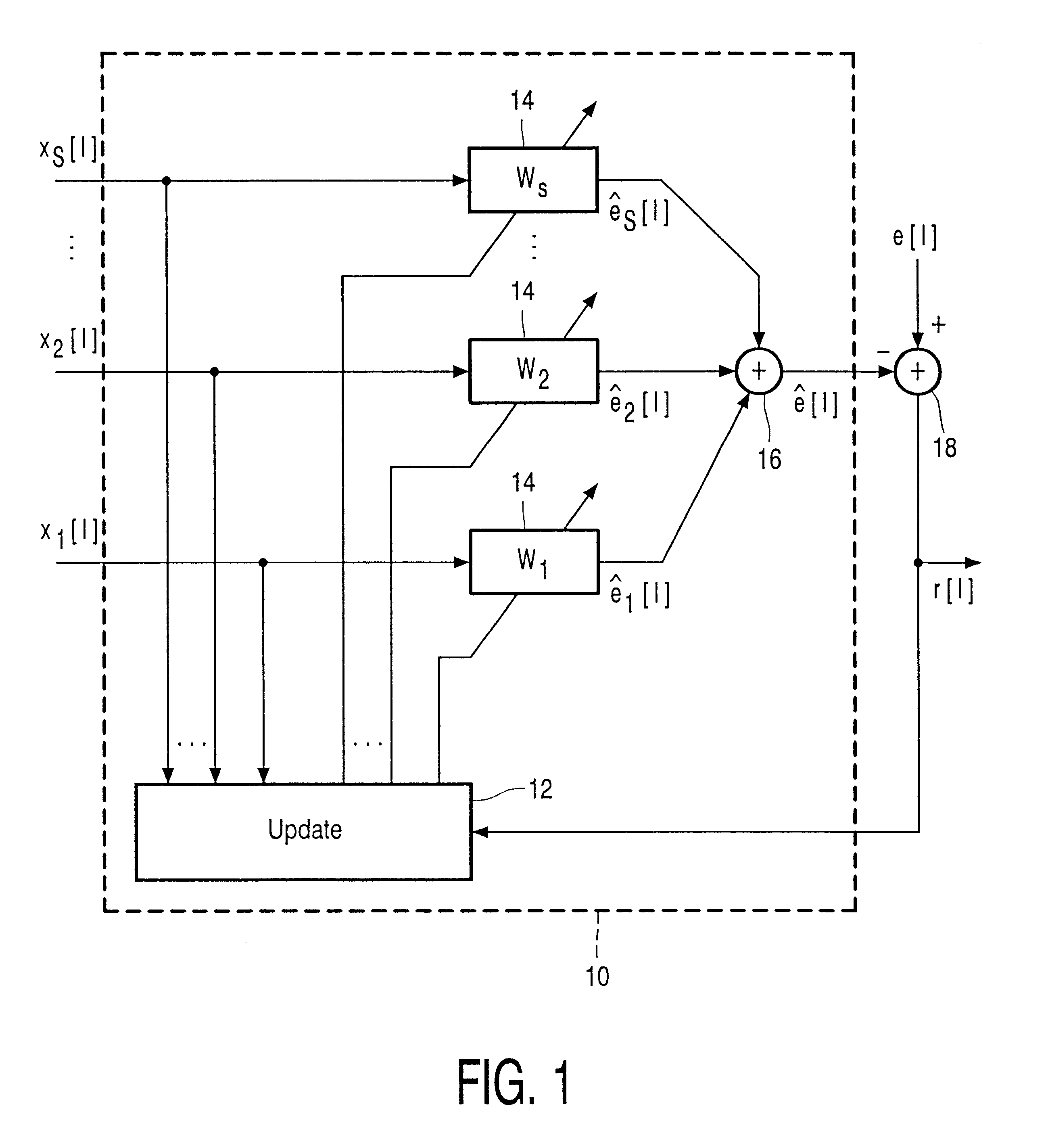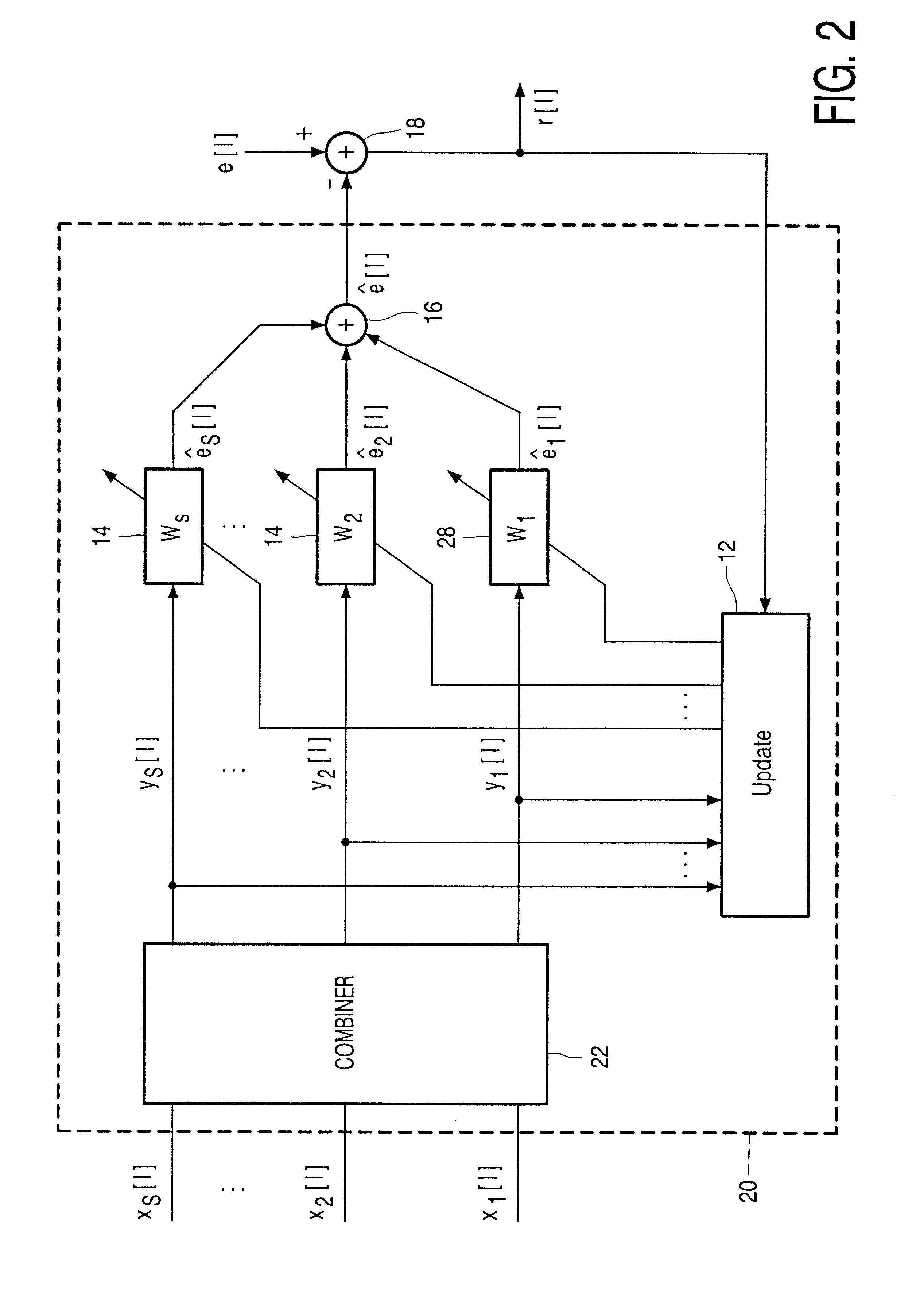Asymmetric multichannel filter
a multi-channel filter and asymmetric technology, applied in the field of multi-channel filters, can solve the problems of inability to adapt inability to solve adaptive filters in unique ways, and inability to achieve unique solutions, etc., and achieve the effect of simple but effectiv
- Summary
- Abstract
- Description
- Claims
- Application Information
AI Technical Summary
Benefits of technology
Problems solved by technology
Method used
Image
Examples
first embodiment
[0025]FIG. 2 shows a block diagram of a multi-channel filter 20 according to the invention. The multi-channel filter 20 has S channels and comprises S inputs for receiving S input signals x1 . . . xS and S filters 14,28 coupled to these inputs x1 . . . xS. The multi-channel filter 20 further comprises a signal combiner 16 for combining the filtered signals ê1 . . . êS into an output signal ê. The signal combiner 20 is implemented by an adder 16. The multi-channel filter 20 comprises an update means 12 which updates the filter coefficients W1 . . . WS of the filters 14, 28. The update means 12 is connected to the S inputs as well as to a further input via which a control signal r is supplied to the update means 12. The multi-channel filter 20 comprises a further signal combiner 22 coupled in between at least part of the inputs and at least part of the filters 14, 28. The further signal combiner 22 is arranged for combining at least part of the input signals x1 . . . xS into auxiliary...
second embodiment
[0032]FIG. 3 shows a block diagram of a multi-channel filter 20 according to the invention. The multi-channel filter 20 has S channels and comprises S inputs for receiving S input signals x1 . . . xS, and S short filters 14 coupled to these inputs x1 . . . xS. The multi-channel filter 20 comprises update means 12 for updating the filter coefficients W1 . . . WS of the filters 14. The update means 12 is connected to the S inputs as well as to a further input via which a control signal r is supplied to the update means 12. The multi-channel filter 20 comprises an adder 22 which functions as a further signal combiner 22 and which combines the input signals x1 . . . xS into an auxiliary signal y1. The auxiliary signal y1 is delayed by a delay element 24 in order to compensate for the delay of the filters 14. The delayed auxiliary signal y1 is thereafter filtered by a long filter 28. The coefficients WL of filter 28 are updated by a further update means 26. The multi-channel filter 20 fu...
PUM
 Login to View More
Login to View More Abstract
Description
Claims
Application Information
 Login to View More
Login to View More - R&D
- Intellectual Property
- Life Sciences
- Materials
- Tech Scout
- Unparalleled Data Quality
- Higher Quality Content
- 60% Fewer Hallucinations
Browse by: Latest US Patents, China's latest patents, Technical Efficacy Thesaurus, Application Domain, Technology Topic, Popular Technical Reports.
© 2025 PatSnap. All rights reserved.Legal|Privacy policy|Modern Slavery Act Transparency Statement|Sitemap|About US| Contact US: help@patsnap.com



